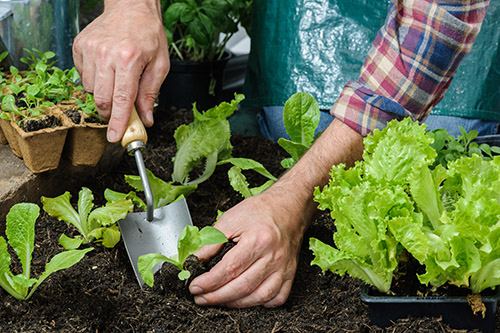30 July 2024

The key to a bountiful midsummer planting is knowing the average first frost date in your area. Not all late vegetables can survive frost. Knowing the first frost date and accounting for the required number growing days to reach maturity can help you work backward to determine a good planting date.
Cool-season vegetables, which includes kale and others in the cabbage family, may be one of the best choices for midsummer planting because of their flexibility in cooler weather. An early frost will not kill them before they are ready to eat and some cold-tolerant varieties actually have a better quality when grown in cool weather.
Days to maturity: 30-60
Cold hardiness: Poor — killed by frost.
Days to maturity: 50-60
Cold hardiness: Good — survives into high 20s.
Days to maturity: 45-65
Cold hardiness: Poor — killed by frost.
Days to maturity: 50-70
Cold hardiness: Fair — survives light frost.
Days to maturity: 90-100
Cold hardiness: Great — survives down to 20 F.
Days to maturity: 50-90
Cold hardiness: Great — survives down to 20 F.
Days to maturity: 60-80
Cold hardiness: Fair — survives light frost.
Days to maturity: 60-70
Cold hardiness: Fair — survives light frost.
Days to maturity: 40-65
Cold hardiness: Great — survives down to 20 F.
Days to maturity: Harvest the following July.
Cold hardiness: Overwinters in ground.
Days to maturity: 60-70
Cold hardiness: Good — survives into high 20s.
Days to maturity: 40-65
Cold hardiness: Great — survives down to 20 F.
Days to maturity: 50-60
Cold hardiness: Fair — survives light frost.
Days to maturity: 40-60
Cold hardiness: Fair — survives light frost.
Days to maturity: 30-40
Cold hardiness: Fair — survives light frost.
Days to maturity: 70-80
Cold hardiness: Good — survives into high 20s.
Days to maturity: 30-60
Cold hardiness: Excellent — dig up until soil freezes.
Days to maturity: 35-45
Cold hardiness: Fair — survives light frost, but may overwinter.
Days to maturity: 40-60
Cold hardiness: Fair — survives light frost.
Days to maturity: 50-60
Cold hardiness: Fair — survives light frost.
If you’ll be planting your second round of crops for the summer, turn over the soil and mix in some balanced fertilizer to replace what your first crop used. Additionally, remove leftover debris like stems and roots from the first planting to avoid problems with seed germination. Your garden will be ready for a second planting within a week or two of prepping it.
For more information, stop by Monnick Supply in Framingham and Marlborough.